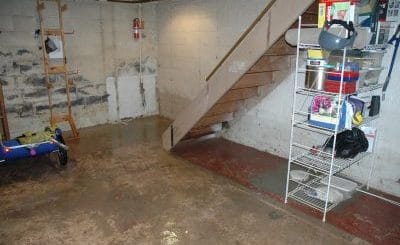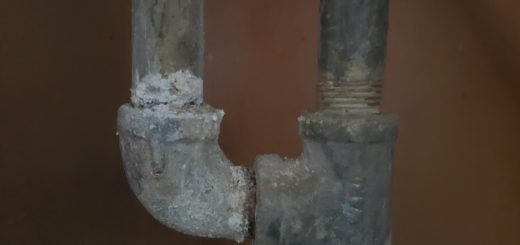How to Repair Water Damaged Ceiling Plaster?
While plasterPlaster is a building material made of lime, gypsum, or ceme... More ceiling or walls might not be a common sight in new constructions nowadays, they are a defining feature of older homes, where the traditional method of using lath (thin strips of wood) and plasterPlaster is a building material made of lime, gypsum, or ceme... More to create walls is prevalent. This construction technique, although durable, is particularly vulnerable to damage from exposure to moisture or high humidityHumidity is the amount of moisture or water vapor present in... More levels. Water can seep into the smallest cracks and crevices, causing the plasterPlaster is a building material made of lime, gypsum, or ceme... More to weaken, crumble, and eventually deteriorate, which not only affects the aesthetic appeal of a room but can also compromise the structural integrity of the building.
Therefore, it’s of utmost importance to be vigilant in recognizing the early signs of water damage in plasterPlaster is a building material made of lime, gypsum, or ceme... More ceiling or walls, such as discoloration, peeling paint, or a musty odor, and undertaking the necessary repairs promptly. Addressing water damage in its initial stages can prevent more serious issues down the line, thereby maintaining the integrity and preserving the historical charm of your home. Let’s understand a bit about plasterPlaster is a building material made of lime, gypsum, or ceme... More ceiling.
What is a Plaster Ceiling?
A plasterPlaster is a building material made of lime, gypsum, or ceme... More ceiling is a type of ceiling treatment made from plasterPlaster is a building material made of lime, gypsum, or ceme... More, a mixture of gypsum, sand, water, and sometimes other additives. It is applied directly onto a solid base such as wood or metal lath, creating a smooth and decorative surface overhead. PlasterPlaster is a building material made of lime, gypsum, or ceme... More ceilings can be found in various architectural styles, from classical to modern, and are often adorned with intricate designs, moldings, and decorative motifs. Beyond their aesthetic appeal, plasterPlaster is a building material made of lime, gypsum, or ceme... More ceilings also offer practical benefits such as sound insulationInsulation is a material used in buildings to reduce the tra... More and fire resistance. They are also typically installed to hide electrical wiring for fans and lights, along with ducting for air conditioning units and plumbing pipes.
How to Identify Water Damage on a Plaster Ceiling?
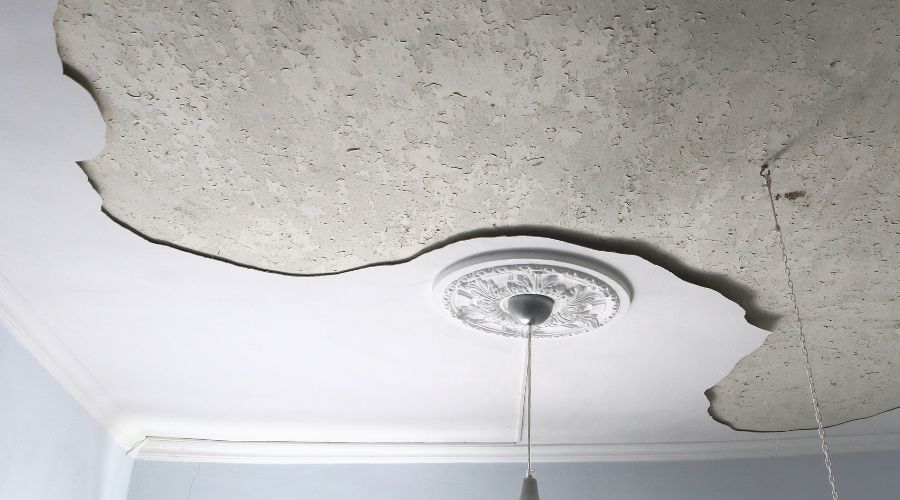
Exposure to moisture can cause significant damage to plasterPlaster is a building material made of lime, gypsum, or ceme... More ceiling, leading to costly repairs. It’s essential to quickly identify damp plasterPlaster is a building material made of lime, gypsum, or ceme... More walls to prevent further deterioration. Here’s how you can identify water damaged plasterPlaster is a building material made of lime, gypsum, or ceme... More ceiling walls:
- Dripping paint stains: If you have irregular paint stains that have a water-like appearance or drip-like appearance, this typically means that you have a leak in the plumbing or water coming in from the outside. Usually, these are found near a break in the wall.
- Efflorescence buildup: If you have efflorescence buildup on the surface of your plasterPlaster is a building material made of lime, gypsum, or ceme... More walls, this is an indication of a large amount of moisture. You can easily remove efflorescence; however, you will need to find the underlying problem first.
- Paint that is loose or flaking: You can easily identify water damaged plasterPlaster is a building material made of lime, gypsum, or ceme... More walls just by checking if the paint is loose or flaking. Most wall paints are insoluble and when the plasterPlaster is a building material made of lime, gypsum, or ceme... More is wet, the paint can start separating, flaking, and bubbling. Usually, this happens very quickly so if you notice loose or flaking paint, make sure to check the area underneath the paint to see if it is moist.
- MoldMold is a type of fungus that grows in damp or humid conditi... More infestation: If your home is experiencing a moldMold is a type of fungus that grows in damp or humid conditi... More infestation, it’s a clear sign of excess moisture. MoldMold is a type of fungus that grows in damp or humid conditi... More sporesSpores are microscopic reproductive units of fungi or mold t... More proliferate rapidly in moist environments. Observing any signs of moldMold is a type of fungus that grows in damp or humid conditi... More necessitates promptly contacting a professional to remove the affected plasterPlaster is a building material made of lime, gypsum, or ceme... More. This exposes the underlying area, allowing for effective moldMold is a type of fungus that grows in damp or humid conditi... More treatment.
What Happens When your Plaster Ceiling Gets Wet?
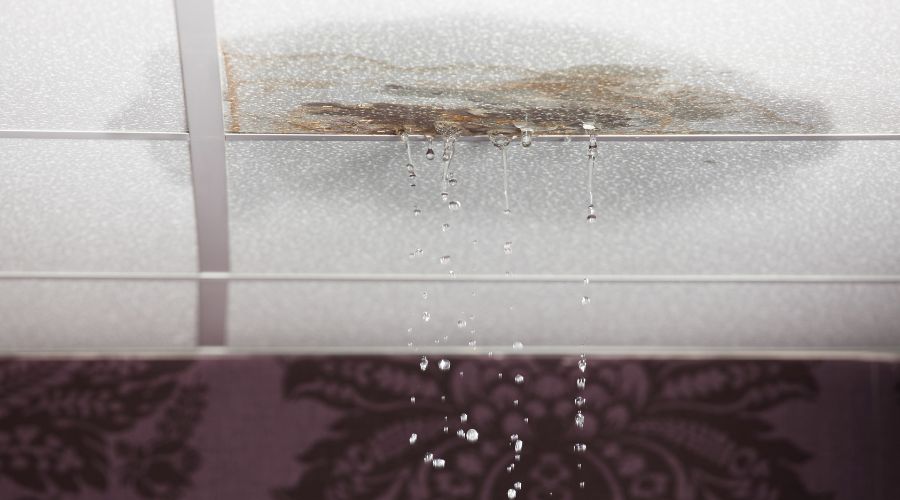
The answer to this question will depend on how much water is absorbed, so let’s go through each possible scenario:
- Small amount of water on your plasterPlaster is a building material made of lime, gypsum, or ceme... More walls: If you encounter a minor spill on your plasterPlaster is a building material made of lime, gypsum, or ceme... More wall, it’s easily manageable. Simply dab the area with a dry cloth to remove the water. This minor incidentAn incident is an event or occurrence that causes damage, di... More should not cause any damage to your wall. For faster dryingDrying is the process of removing moisture from materials, s... More, consider using a fan directed at the affected area.
- Large amount of water: A significant amount of water on a plasterPlaster is a building material made of lime, gypsum, or ceme... More wall can weaken and soften the material. Persistent moisture on the plaster’s surface may leadLead is a heavy metal that can be toxic to humans, especiall... More to extensive water damage. Moreover, this can result in mold growth, adversely impacting your home’s condition and air quality.
- SaturationSaturation is the point at which a material or environment c... More of plasterPlaster is a building material made of lime, gypsum, or ceme... More walls: If your plasterPlaster is a building material made of lime, gypsum, or ceme... More wall has been saturated with water, the wood lath that is behind the plasterPlaster is a building material made of lime, gypsum, or ceme... More can absorb the water and can expand. Once it has expanded, it can push outward, and your wall will crack and weaken. In this case, you will need to get the wall repaired or replaced by a professional.
- Replacement of plasterPlaster is a building material made of lime, gypsum, or ceme... More walls: For optimal results, it’s advisable to dismantle your plasterPlaster is a building material made of lime, gypsum, or ceme... More walls using pry bars and then refinish them with contemporary drywall. During the demolition process, ensure you wear a dust mask and properly ventilate the area. Be cautious, as old plasterPlaster is a building material made of lime, gypsum, or ceme... More walls might be coated with lead-based paint, posing significant health risks.
How to Repair Water Damage on Your Plaster Ceiling?
If you notice signs such as bubbling, flaking, or staining on your plasterPlaster is a building material made of lime, gypsum, or ceme... More ceiling, these are often telltale indicators of water damage. This damage can compromise the structural integrity and aesthetic appeal of your walls if not addressed promptly. To effectively mitigateTo mitigate is to reduce or limit the severity of damage, ri... More and repairRepair is the act of fixing or restoring damaged property, m... More water damage on your plasterPlaster is a building material made of lime, gypsum, or ceme... More walls, it’s crucial to follow a series of detailed steps designed to assess, prepare, and restore the affected areas to their original condition.
Assess the damage
Catching damage early might mean you’re only facing a problem with the outer plasterPlaster is a building material made of lime, gypsum, or ceme... More layer. However, if the damage has been overlooked for some time, you could be contending with water that has seeped through all the plasterPlaster is a building material made of lime, gypsum, or ceme... More layers, soaking the lath beneath. In such instances, it’s crucial to seek professional assistance to address any damaged or decayed wood, or rusted metal, ensuring a thorough and effective repairRepair is the act of fixing or restoring damaged property, m... More.
Remove all the damaged plaster
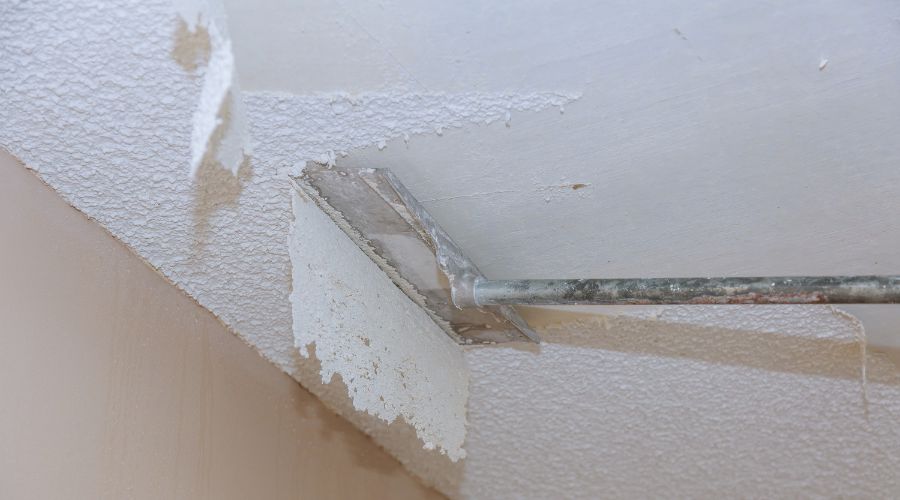
It is important to remove any plasterPlaster is a building material made of lime, gypsum, or ceme... More that has been damaged by water. Make sure all the flaking, bubbling, or peeling material is removed with a putty knife. Also, continue removing layers of damaged plasterPlaster is a building material made of lime, gypsum, or ceme... More until you hit hard plasterPlaster is a building material made of lime, gypsum, or ceme... More.
Clean any dust
After removing damaged plasterPlaster is a building material made of lime, gypsum, or ceme... More, it’s essential to clean the area thoroughly. Use a stiff brush to remove loose plasterPlaster is a building material made of lime, gypsum, or ceme... More particles, then vacuum up any remaining dust and debris. This step ensures a smooth surface for the repairRepair is the act of fixing or restoring damaged property, m... More materials to adhere to.
Wash the area around the wall
Washing the area around the damaged wall helps to remove any residual dust and dirt that could affect the adhesion of the repairRepair is the act of fixing or restoring damaged property, m... More materials. Dip a spongeA sponge is a porous material used to absorb liquids or clea... More in clean water and gently clean the surrounding area, then allow the wall to dry completely before proceeding.
Prime and seal
To guard against stains and shield against any lingering contaminants, it’s crucial to apply an oil-based primer-sealer. Allow the primer to dry thoroughly for approximately one hour before proceeding to the next step.
Repair
Ensure you apply multiple layers of joint compound, spreading it thinly and evenly while removing any surplus. After it dries, sand it to achieve a smooth finish. Repeat this process several times for a proper repairRepair is the act of fixing or restoring damaged property, m... More.
Paint the plaster ceiling wall
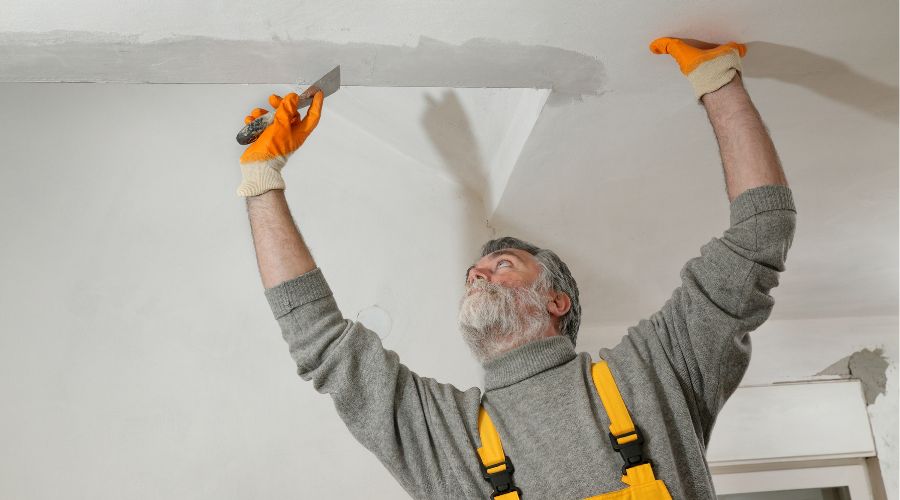
Professional Water Damage Restoration

If your plasterPlaster is a building material made of lime, gypsum, or ceme... More walls have suffered water damage, you should call water damage restoration experts to provide assistance. Whether the damage is due to a roof leak, a burst pipe, or sewageSewage is wastewater containing biological and chemical cont... More backup, these professionals will address the source of the water and ensure that the resulting damage is fully restored. Using advanced water extraction and dryingDrying is the process of removing moisture from materials, s... More equipment, they will remove the water and moisture from the ceiling. Additionally, as part of their reconstruction services, they will repairRepair is the act of fixing or restoring damaged property, m... More or replace the ceiling as necessary.











